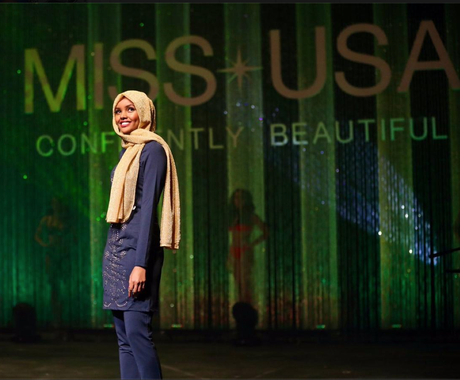
Halima Aden
Ever since reading the work of authors such as bell hooks, Simone de Beauvoir, and Naomi Wolf, I have dismissed the concept of physical beauty as a trivial social construct. The mainstream narrative of beauty glorifies Eurocentric beauty ideals and promotes unrealistic body types, which in turn plays into deeper, systemic issues of racism and sexism. What I failed to realize by making this assumption, however, is that despite the reality of their roots, physical beauty and outward appearances still effectively play a significant role in how many aspects of societies function — and it is therefore very impractical to dismiss them as petty and irrelevant.
Perhaps I was so willing to ignore these social constructs, though, because I was personally clueless as to where exactly I fit into this sphere. As a female, Muslim teenager who chooses to don the hijab, I can’t really relate to the mainstream fashion trends that are associated with beauty and propagated in fashion magazines and all over social media, such as crop tops or high-waisted jeans. Instead, I scour Instagram and YouTube for hijabistas who make hijab tutorials and put together lookbooks with modest clothing. Women who wear the hijab are rarely integrated into the mainstream narrative of beauty, and as a result I never got external ‘validation’ that my hijab was beautiful.
I was pleasantly surprised, therefore, when Halima Aden, a Somali-American Muslim teenager who wears the hijab, made it to the semifinals of the Miss Minnesota USA pageant, making history by doing so. Aden has said that, “there is not one description for beauty” and that beauty “has different faces, different stories, different backgrounds, and it’s okay to embrace all of those.” She also wore a burkini during the swimsuit round of the pageant.
Aden’s win is a big deal. Aden is trying to redefine beauty standards to include Muslim women who wear the hijab as part of mainstream beauty. Her participation in the competition is a great way to extend the mainstream representation of beauty in American culture in order to create a more inclusive narrative of beauty. In doing so, she joins a growing legacy of women who have defied mainstream stereotypes of beauty in the institution of beauty pageants — such as Kylan Arianna Wenzel, a transgender woman, who competed in the Miss California USA pageant in 2013, Arianna Quan, crowned Miss Michigan, who was the only Chinese-American to compete for Miss America this year, and the first black Miss USA, Caroline Gist, who won the title in 1990.
But, of course, it’s still crucial to remember that beauty pageants have a long record of favoring contestants who are slimmer, taller, and meet Eurocentric beauty ideals. Beauty pageants have also normalized an image of beauty that reinforces unrealistic beauty standards. It’s valid, therefore, to ask why it took a hijabi advancing to the semifinal round of a beauty pageant to finally convince Americans that the hijab is worthy of being considered beautiful. But it’s also worth questioning why we have to seek external validation by mainstream media to answer this question in the first place. We want to be included in this society’s understanding of beauty, and consider the validation of authoritative entities like the fashion and beauty industries as a victory. But is it really?
The representation of women of different body types and skin colors in mainstream media is important, because young women whose identities are underrepresented do not often find characters to whom they can relate. They grow up feeling like nobody is telling their stories and assume that they must therefore be unimportant. Young girls growing up without representation in books, movies, and other narratives can lose sight of who they are and not have pride and confidence in their identities.
But even so, it’s important that women refuse to allow anything from magazines to the results of a beauty pageant determine their beauty. Beauty comes in so many different forms, and just because mainstream beauty outlets are not promoting different images of beauty doesn’t mean that who you are isn’t still beautiful.
Halima Aden’s accomplishment of making it to the semifinals of the Miss Minnesota USA pageant is notable and perhaps serves as a glimpse into how beauty pageants are possibly evolving and reassessing how they judge beauty. It is inspiring to see her try to pave the way way for representation in beauty pageants and send a reassuring message to other women and girls who wear the hijab that they are beautiful no matter what society says. But her appearance in the pageant should never determine whether my (or any other young hijabi girl’s) beauty and self-worth are validated. We have been beautiful and worthy all along.

